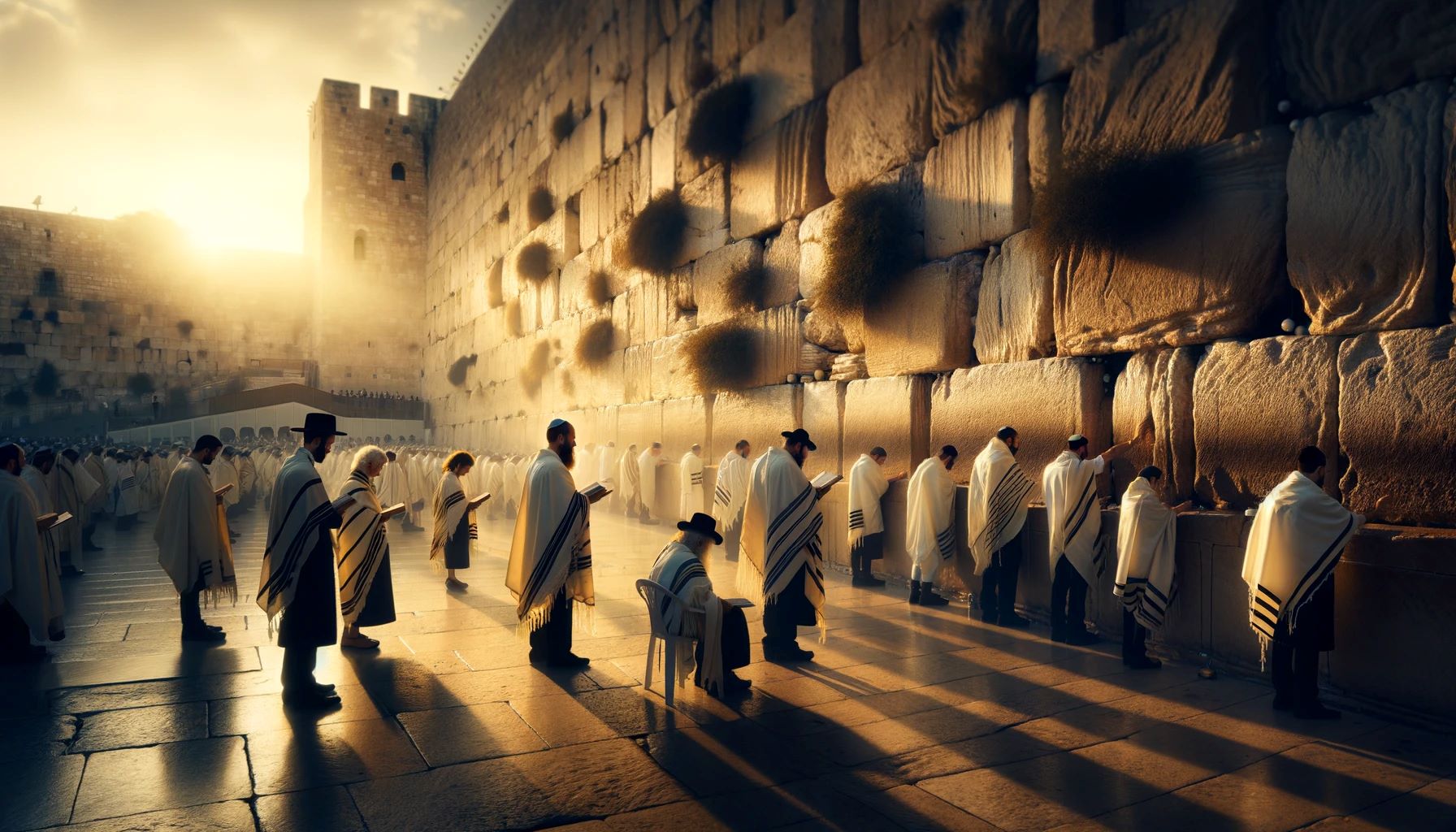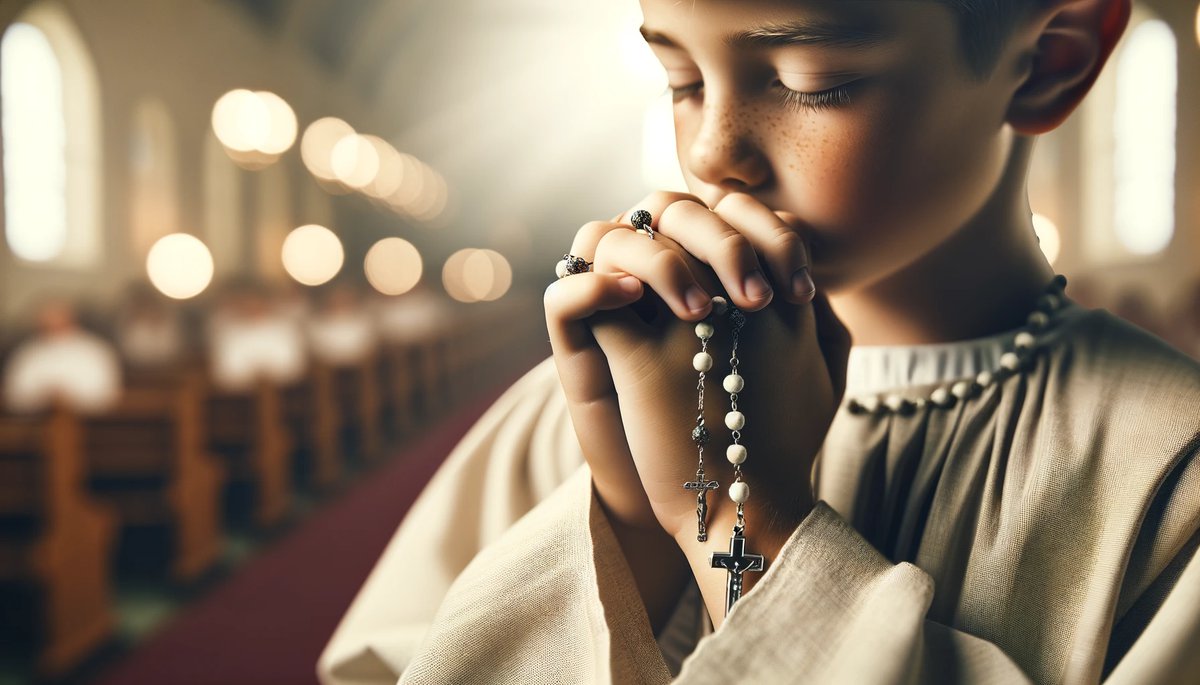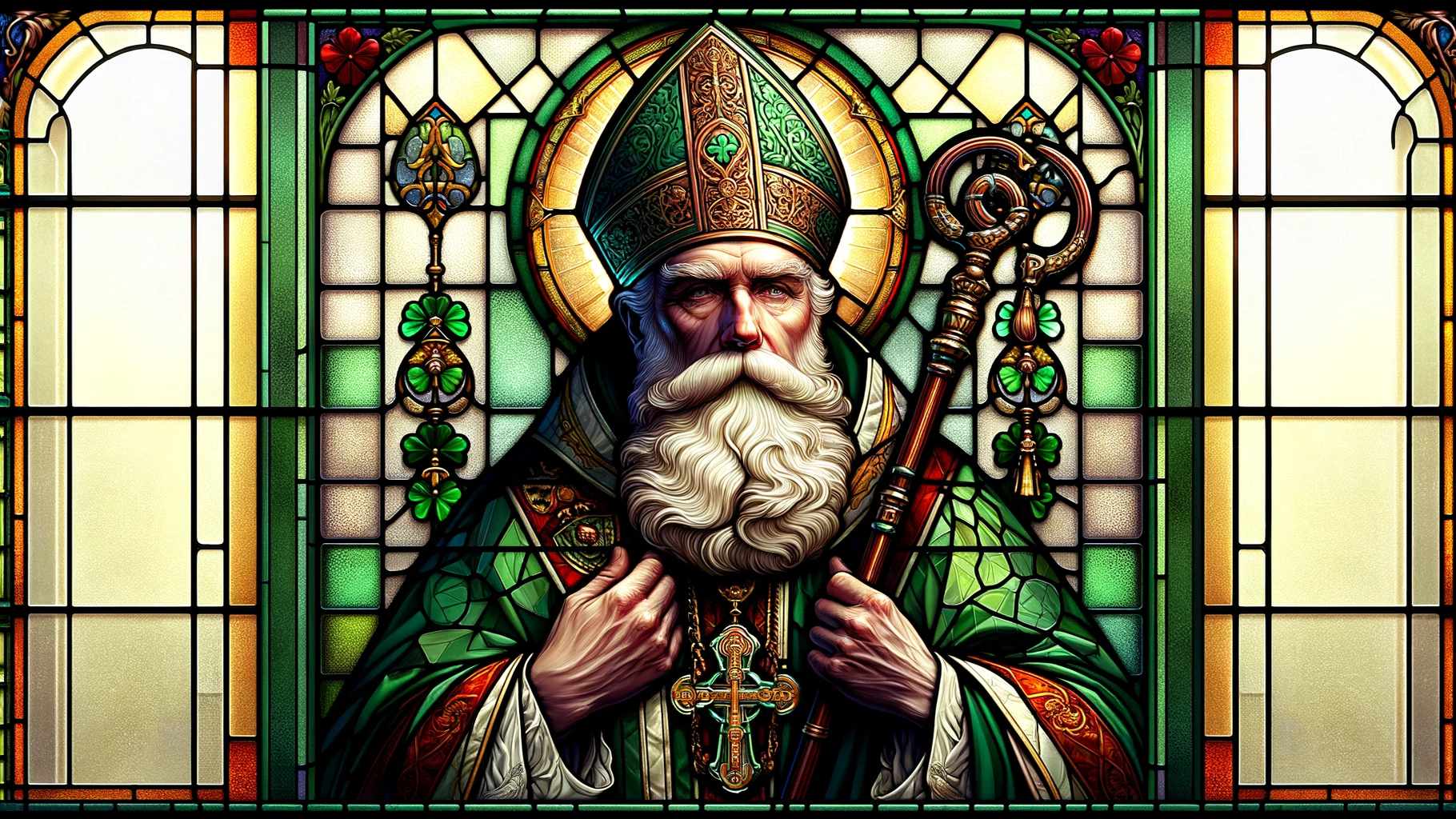Home>Special Themes>When Is The First Day Of Lent


Special Themes
When Is The First Day Of Lent
Published: February 27, 2024
Peter Smith, Editorial Director at Christian.net, combines deep insights into faith, politics, and culture to lead content creation that resonates widely. Awarded for his contributions to religious discourse, he previously headed a major organization for religious communicators, enhancing dialogue on faith's societal impacts.
Discover the significance of the first day of Lent and its special themes. Learn about the traditions and practices observed on this important day.
(Many of the links in this article redirect to a specific reviewed product. Your purchase of these products through affiliate links helps to generate commission for Christian.net, at no extra cost. Learn more)
Table of Contents
History of Lent
Lent has a rich history that dates back to the early days of Christianity. The word "Lent" itself comes from the Old English word "lencten," which means spring. The observance of Lent can be traced back to the 4th century, making it one of the oldest traditions in the Christian faith. It was initially established as a time of preparation for new converts to Christianity and a period of penance for those who had committed serious sins. Over time, the duration of Lent has varied, with the 40-day period becoming standardized in the 7th century. This period is symbolic of the 40 days that Jesus spent fasting in the wilderness before beginning his public ministry.
During the early centuries of Christianity, Lent was primarily observed by new converts as they prepared for baptism. However, as the church evolved, Lent became a time for all believers to engage in self-reflection, repentance, and spiritual discipline. The practices associated with Lent, such as fasting, prayer, and almsgiving, were seen as a way to emulate Jesus's sacrifice and resist temptation, much like he did during his time in the wilderness.
The history of Lent is also intertwined with the development of the liturgical calendar. The 40-day period leading up to Easter was established as a time of fasting and penitence, mirroring the 40 days Jesus spent in the desert. This period was seen as an opportunity for believers to purify their hearts and draw closer to God. Over time, the observance of Lent has become a significant part of the Christian tradition, with various denominations incorporating their own unique customs and practices into the season.
Lent has evolved over the centuries, but its historical roots remain deeply embedded in the early traditions of the Christian church. Today, it continues to be a time of spiritual renewal and growth for millions of Christians around the world.
Read more: What Is The First Day Of Lent Called?
Significance of Ash Wednesday
-
Ash Wednesday marks the beginning of the Lenten season and holds great significance in the Christian calendar. It falls 46 days before Easter Sunday and is observed by many denominations, including Catholics, Anglicans, Lutherans, and some other Protestant churches.
-
The most prominent feature of Ash Wednesday is the imposition of ashes on the foreheads of believers. The ashes are typically made by burning the palm branches blessed on the previous year's Palm Sunday. The act of receiving ashes is a powerful symbol of mortality and repentance. It serves as a reminder of human frailty and the need for God's forgiveness.
-
The use of ashes has deep biblical roots, with numerous references in the Old Testament to the act of repenting in sackcloth and ashes. In the New Testament, Jesus speaks of repentance and the need to turn away from sin. The ashes serve as a visible sign of this inward spiritual reality.
-
Ash Wednesday also marks the beginning of a period of fasting and abstinence for many Christians. It is a time to reflect on one's life, to seek forgiveness for past wrongs, and to recommit to a life of faith and discipleship. The ashes are a tangible reminder of this spiritual journey and the call to live a life pleasing to God.
-
The ashes are often imposed with the words, "Remember that you are dust, and to dust you shall return" or "Repent, and believe in the Gospel." These phrases encapsulate the dual themes of mortality and repentance that are central to the observance of Ash Wednesday.
-
In addition to the imposition of ashes, Ash Wednesday services often include readings from the Bible, prayers of confession, and a solemn reminder of the brevity of life. It is a time for believers to pause, reflect, and reorient their lives toward God.
-
The significance of Ash Wednesday lies in its ability to set the tone for the Lenten season. It serves as a solemn and introspective day, calling believers to examine their hearts, seek reconciliation, and prepare for the journey toward Easter.
Practices and Traditions during Lent
-
Fasting: One of the most well-known practices during Lent is fasting. This typically involves abstaining from certain foods or meals, with Ash Wednesday and Good Friday being the most significant days of fasting. The purpose of fasting is to discipline the body and focus on spiritual growth. Many Christians also choose to fast from other indulgences, such as social media or television, as a way to redirect their attention to their faith.
-
Prayer: Lent is a time for intensified prayer and spiritual reflection. Many believers use this season to deepen their prayer life, seeking a closer relationship with God. Some churches offer special prayer services or devotional resources to guide individuals through this period of spiritual growth. Additionally, some Christians may choose to participate in prayer vigils or attend daily worship services as a way to enhance their spiritual discipline.
-
Almsgiving: Giving to those in need is another important tradition during Lent. Almsgiving is seen as a way to emulate Christ's compassion and generosity. Many churches and charitable organizations organize special initiatives during Lent to support the less fortunate. This practice encourages believers to consider the needs of others and to demonstrate love and compassion through tangible acts of kindness.
-
Self-Examination: Lent provides an opportunity for believers to engage in self-examination and repentance. It is a time to reflect on one's actions, seek forgiveness for past wrongs, and make amends with others. This introspective practice is essential for spiritual growth and renewal, as it allows individuals to confront their shortcomings and strive for personal transformation.
-
Liturgy and Worship: Throughout Lent, churches often incorporate special liturgical elements into their worship services. This may include the reading of specific biblical passages, the singing of hymns focused on repentance and redemption, and the use of purple vestments and paraments to symbolize penitence. These elements serve to create a solemn and reflective atmosphere, guiding believers through the Lenten journey.
-
Abstinence: In addition to fasting, many Christians choose to abstain from certain activities or behaviors during Lent. This may include refraining from entertainment, excessive spending, or negative habits. The goal of abstinence is to cultivate self-discipline and redirect one's focus toward spiritual matters.
-
Lenten Devotions: Some individuals and families engage in special devotional practices during Lent. This may involve reading through specific passages of Scripture, using Lenten-themed devotionals, or participating in spiritual exercises designed to deepen one's faith. These devotions provide a structured framework for spiritual growth and reflection during the Lenten season.
-
Acts of Service: Lent is also a time for believers to engage in acts of service and outreach to their communities. This may involve volunteering at local shelters, participating in mission trips, or organizing initiatives to support those in need. By serving others, individuals embody the spirit of Christ and demonstrate the love and compassion central to the Christian faith.
-
Symbolism: Throughout Lent, various symbols are used to convey its themes of repentance, sacrifice, and renewal. The color purple, for example, is often associated with Lent and represents penitence and preparation. Additionally, the use of ashes on Ash Wednesday serves as a powerful symbol of mortality and the need for repentance.
-
Easter Preparation: Ultimately, the practices and traditions observed during Lent are designed to prepare believers for the celebration of Easter. By engaging in disciplines such as fasting, prayer, and almsgiving, Christians seek to align their hearts and minds with the significance of Christ's death and resurrection. These practices serve to deepen one's appreciation for the Easter season and the redemptive work of Jesus Christ.
Lenten Calendar and Important Dates
-
Ash Wednesday: This marks the beginning of Lent and is observed with the imposition of ashes on the foreheads of believers. It falls 46 days before Easter Sunday and serves as a solemn reminder of mortality and the need for repentance.
-
First Sunday of Lent: This Sunday marks the start of the Lenten journey and is a time for believers to reflect on the significance of the season. It sets the tone for the weeks of spiritual discipline and preparation leading up to Easter.
-
Holy Week: The final week of Lent, Holy Week begins with Palm Sunday, commemorating Jesus' triumphant entry into Jerusalem. It includes Maundy Thursday, which recalls the Last Supper, Good Friday, marking the crucifixion of Jesus, and Holy Saturday, a day of reflection and anticipation.
-
Easter Triduum: This three-day period encompasses Maundy Thursday, Good Friday, and Holy Saturday, leading up to Easter Sunday. It is a time of intense liturgical activity and spiritual significance, culminating in the celebration of Christ's resurrection.
-
Palm Sunday: This day commemorates Jesus' entry into Jerusalem, where crowds greeted him with palm branches. It serves as a prelude to Holy Week and the events leading up to Easter.
-
Holy Thursday (Maundy Thursday): This day commemorates the Last Supper, where Jesus shared a final meal with his disciples before his crucifixion. It is a time for believers to reflect on the significance of the Eucharist and Jesus' act of humble service in washing his disciples' feet.
-
Good Friday: The most solemn day of the Christian calendar, Good Friday marks the crucifixion of Jesus. It is a time for believers to contemplate the sacrifice of Christ and the profound implications of his death for humanity.
-
Holy Saturday: This day is a time of reflection and anticipation as believers await the celebration of Easter. It is a period of solemnity and preparation for the joyous resurrection of Jesus.
-
Easter Sunday: The culmination of the Lenten season, Easter Sunday celebrates the resurrection of Jesus Christ. It is a day of great joy and hope, marking the triumph of life over death and the fulfillment of God's redemptive plan.
-
Easter Monday: The day following Easter Sunday, Easter Monday is a time for believers to continue the celebration of Christ's resurrection and reflect on the significance of this pivotal event in the Christian faith.
The Lenten calendar and important dates provide a structured framework for believers to engage in spiritual disciplines and prepare their hearts for the celebration of Easter. Each date holds its own significance and serves as a milestone in the journey of Lent, guiding believers through a period of reflection, repentance, and anticipation of the resurrection.
How Different Christian Denominations Observe Lent
Read more: When Is The First Day Of Advent 2024
Roman Catholic Church
- The Roman Catholic Church places a strong emphasis on the observance of Lent, considering it a period of fasting, abstinence, and penitential practices. Catholics are encouraged to abstain from meat on Ash Wednesday, Good Friday, and all Fridays during Lent. They are also expected to fast on Ash Wednesday and Good Friday, consuming only one full meal and two smaller meals that do not equal a full meal. Additionally, Catholics are encouraged to participate in the Sacrament of Reconciliation (Confession) as a means of spiritual preparation for Easter.
Eastern Orthodox Church
- In the Eastern Orthodox tradition, Lent, known as the Great Lent, is a time of rigorous fasting and prayer. The observance begins with Clean Monday and continues for 40 days, mirroring the period of Jesus' fasting in the wilderness. Orthodox Christians abstain from meat, dairy, fish, oil, and wine throughout the entirety of Lent, with some exceptions on certain feast days. The focus is on spiritual discipline, repentance, and preparation for the celebration of Christ's resurrection.
Anglican/Episcopal Church
- Anglicans and Episcopalians observe Lent as a time of self-examination, repentance, and spiritual growth. The emphasis is on prayer, fasting, and acts of charity. While the specific practices may vary among individual parishes, the overall goal is to engage in disciplines that draw believers closer to God and prepare them for the joy of Easter. Many Anglican and Episcopal churches offer special Lenten services, such as Stations of the Cross and midweek Eucharists, to guide their congregations through the season.
Lutheran Church
- Lutherans approach Lent as a time of reflection on Christ's sacrifice and a period of spiritual renewal. While the observance of Lent is not as strict as in some other denominations, Lutherans may choose to fast, abstain from certain foods, and engage in additional prayer and devotional practices. The focus is on deepening one's faith and preparing for the celebration of Easter through a renewed commitment to discipleship and service.
Read more: Why 50 Days Of Lent
Methodist Church
- Methodists view Lent as a time for self-examination, repentance, and spiritual growth. The emphasis is on prayer, fasting, and acts of mercy. Many Methodist congregations offer special Lenten study groups, prayer services, and opportunities for charitable outreach. The goal is to create a space for believers to deepen their relationship with God and align their lives with the teachings of Jesus Christ.
Baptist Church
- While Lent is not as widely observed in Baptist tradition as in some other denominations, many individual Baptist congregations may choose to incorporate elements of Lent into their worship and spiritual practices. This may include special services focused on repentance and preparation for Easter, as well as opportunities for believers to engage in acts of service and self-discipline.
Pentecostal Church
- Pentecostal Christians may approach Lent with a focus on spiritual renewal and personal devotion. While Lenten observances may not be as formalized as in some other denominations, Pentecostals may choose to engage in fasting, prayer, and acts of charity as a means of preparing their hearts for the celebration of Easter. The emphasis is on drawing closer to God and seeking a deeper experience of His presence.
Non-Denominational Churches
- In non-denominational Christian communities, the observance of Lent may vary widely based on the individual beliefs and practices of each congregation. Some non-denominational churches may choose to incorporate elements of Lent, such as fasting, prayer, and special services focused on repentance and spiritual growth, while others may place less emphasis on this particular season in the liturgical calendar. The approach to Lent in non-denominational churches is often reflective of the broader diversity within these communities.
The observance of Lent varies among different Christian denominations, reflecting the diverse theological perspectives and traditions within the broader Christian faith. While the specific practices and emphases may differ, the overarching goal of Lent remains consistent: to prepare believers for the celebration of Easter through spiritual disciplines, repentance, and a renewed focus on the redemptive work of Jesus Christ.













